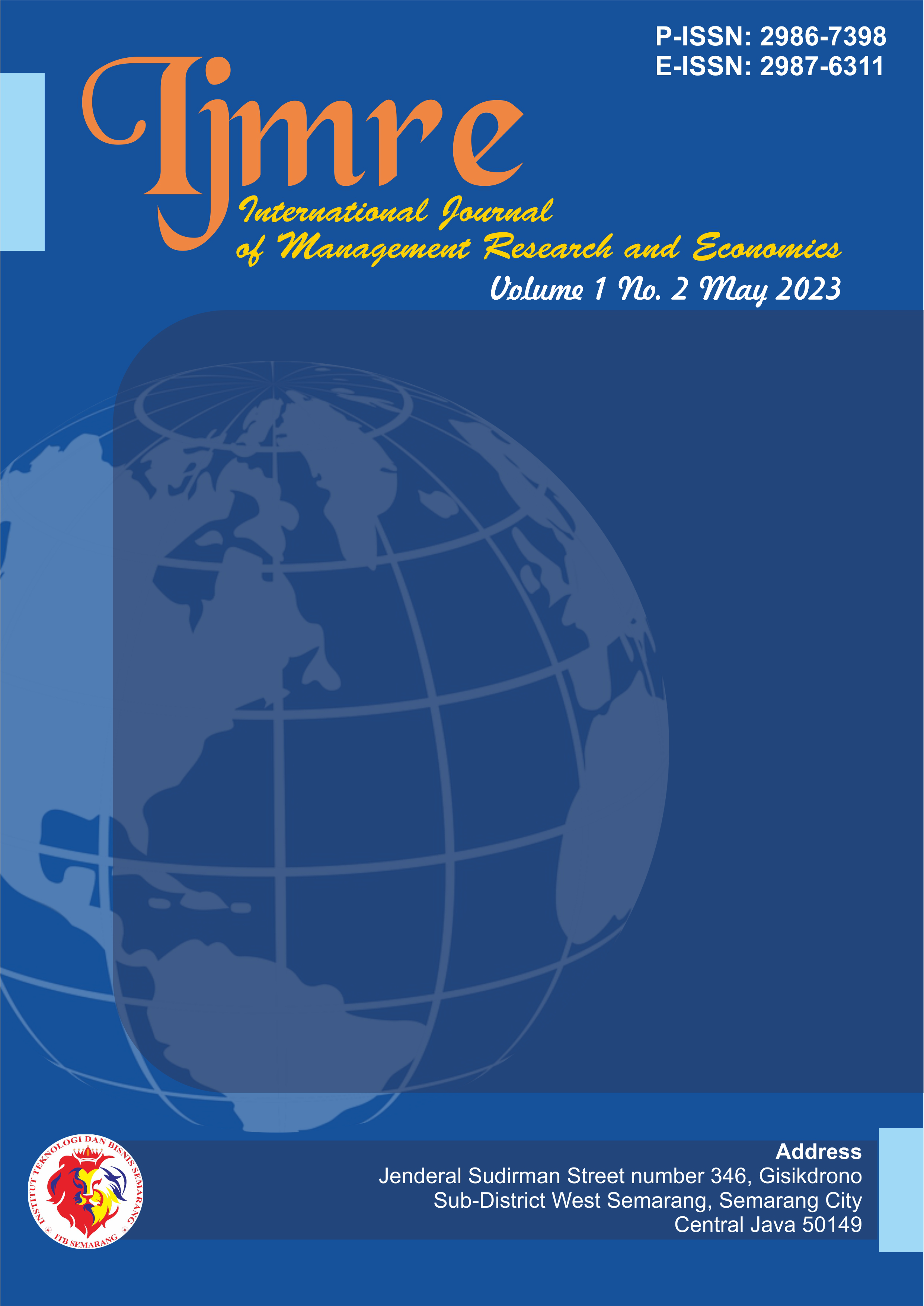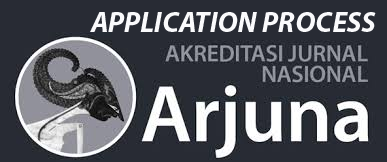Bibliometric Studies In The Use Of Technology And Social Media For Marketing
DOI:
https://doi.org/10.54066/ijmre-itb.v1i2.510Keywords:
Marketing Communications, Social Media, Product Marketing TargetsAbstract
In order to gain a comprehensive view of marketing communications and understand the current research emphasis, this study evaluates the most relevant themes related to marketing communications through a bibliometric analysis using the keyword "marketing communications" as input. The Scopus database is used because it is considered ideal for bibliometric analysis. VOSviewer software is adopted as a bibliometric analysis tool to visualize the network of authors, countries, journals and keywords. An analysis conducted on 23 November 2022 found a total of 1,655 published documents from 2015 to 2022. The results showed that from 2015 to 2022 the number of publications had increased related to the theme of marketing communications. The United States is the country that has the most research benefits related to marketing communications. Keyword analysis shows that marketing communication studies in the last two years refer to marketing done through social media. It is considered more effective in advertising their products to consumers and is also a form of utilizing technology in marketing communications. The presented bibliometric analysis provides relevant information on the main themes of marketing communications and the benefits of social media and technological advancements.
References
Alcántara-Pilar, J. M., Del Barrio-García, S., Porcu, L., &; Crespo-Almendros, E. (2017). Language as a cultural vessel in online servicescapes: Its impact on consumers' perceived risk, attitudes, and behavioural intentions. Journal of Consumer Behaviour, 16(6) : 61–75.
Alwi, S. F. S., Balmer, J. M. T., Stoian, M.-C., &; Kitchen, P. J. (2022). Introducing integrated hybrid communication : the nexus linking marketing communication and corporate communication. Qualitative Market Research: An International Journal, ahead-of-print.
Amatulli, C., De Angelis, M., &; Donato, C. (2021). The atypicality of sustainable luxury products. Psychology & Marketing, 38(11) : 1990–2005.
Duncan, T., & Moriarty, S. E. (1998). A communication-based marketing model for managing relationships. Journal of Marketing, 62(2) : 1–13.
Eck, N. J. Van, & Waltman, L. (2014). Visualizing bibliometric networks. In Measuring scholarly impact 285–320. Springer.
Fakhreddin, F., & Foroudi, P. (2022). Instagram influencers: The role of opinion leadership in consumers' purchase behavior. Journal of Promotion Management, 28(6) : 795–825.
Foroudi, P., Dinnie, K., Kitchen, P. J., Melewar, T. C., &; Foroudi, M. M. (2017). IMC antecedents and the consequences of planned brand identity in higher education. European Journal of Marketing.
Gajanova, L., Majerova, J., &; Nadanyiova, M. (2020). The impact of influencers on the decision- making process regarding the purchase of the brand product. Business, Management and Economics Engineering, 18(2) : 282–293.
Helal, G., Ozuem, W., &; Lancaster, G. (2018). Social media brand perceptions of millennials. International Journal of Retail &; Distribution Management.
Hoekstra, J. C., Leeflang, P. S. H., & Wittink, D. R. (1999). The customer concept: the basis for a new marketing paradigm. Journal of Market-Focused Management, 4(1) : 43–76.
Kitchen, P. J., &; Proctor, T. (2015). Marketing communications in a post-modern world. Journal of Business Strategy.
Koskinen, J., Isohanni, M., Paajala, H., Jääskeläinen, E., Nieminen, P., Koponen, H., Tienari, P., &; Miettunen, J . (2008). How to use bibliometric methods in evaluation of scientific research? An example from Finnish schizophrenia research. Nordic Journal of Psychiatry, 62(2), 136–143.
Krizanova, A., Lăzăroiu, G., Gajanova, L., Kliestikova, J., Nadanyiova, M., &; Moravcikova, D . (2019). The effectiveness of marketing communication and importance of its evaluation in an online environment. Sustainability, 11(24) : 7016.
Martínez-Climent, C., Zorio-Grima, A., &; Ribeiro-Soriano, D. (2018). Financial return crowdfunding: literature review and bibliometric analysis. International Entrepreneurship and Management Journal, 14(3) : 527–553.
Melewar, T. C., Foroudi, P., Gupta, S., Kitchen, P. J., &; Foroudi, M. M. (2017). Integrating identity, strategy and communications for trust, loyalty and commitment. European Journal of Marketing, 51(3) : 572–604.
Mulyana, A., Briandana, R., &; Rekarti, E. (2020). ICT and social media as a marketing communication platform in facilitating social engagement in the digital era. International Journal of Innovation, Creativity and Change, 13(5) : 1–16.
Munoz-Leiva, F., Porcu, L., & Barrio-García, S. del. (2015). Discovering prominent themes in integrated marketing communication research from 1991 to 2012: A co-word analytic approach. International Journal of Advertising, 34(4) : 678–701.
Nadanyiova, M., Gajanova, L., &; Majerova, J. (2020). Green marketing as a part of the socially responsible brand's communication from the aspect of generational stratification. Sustainability, 12(17), 7118.
Nadanyiova, M., Gajanova, L., Majerova, J., &; Lizbetinova, L. (2020). Influencer marketing and its impact on consumer lifestyles. Forum Scientiae Oeconomia, 8(2) : 109–120.
Ozuem, W., Howell, K. E., &; Lancaster, G. (2019). The impact of digital books on marketing communications. Journal of Retailing and Consumer Services, 50 : 131–137.
Ozuem, W., Howell, K., & Lancaster, G. (2022). Exploring the relationship between integrated marketing communications and decentralised organisational structure: a heuristics perspective. Qualitative Market Research: An International Journal.
Palazzo, M., Foroudi, P., Kitchen, P. J., & Siano, A. (2020). Developing corporate communications: insights from the Italian scenario. Qualitative Market Research: An International Journal.
Palazzo, M., Vollero, A., Siano, A., &; Foroudi, P. (2021). From fragmentation to collaboration in tourism promotion: an analys is of the adoption of IMC in the Amalfi coast. Current Issues in Tourism, 24(4) : 567–589.
Paltrinieri, A., Hassan, M. K., Bahoo, S., &; Khan, A. (2019). A bibliometric review of sukuk literature. International Review of Economics &; Finance.
Pérez-Gutiérrez, M., &; Cobo-Corrales, C. (2022). Surfing scientific output indexed in the Web of Science and Scopus (1967-2017). Movimento, 26.
Porcu, L., del Barrio-García, S., Alcántara-Pilar, J. M., & Crespo-Almendros, E. (2017). Do adhocracy and market cultures facilitate firm-wide integrated marketing communication (IMC)? International Journal of Advertising, 36(1) : 121–141.
Porcu, L., Del Barrio-García, S., & Kitchen, P. J. (2017). Measuring integrated marketing communication by taking a broad organisational approach: The firm-wide IMC scale. European Journal of Marketing.
Porcu, L., del Barrio-García, S., Kitchen, P. J., &; Tourky, M. (2020). The antecedent role of a collaborative vs. a controlling corporate culture on firm-wide integrated marketing communication and brand performance. Journal of Business Research, 119, 435–443.
Siano, A., Vollero, A., Della Volpe, M., Confetto, M. G., Foroudi, P., &; Palazzo, M. (2018). The role of physical metaphors for decision-making in integrated corporate communication. The Bottom Line.
Suay-Pérez, F., Penagos-Londoño, G. I., Porcu, L., &; Ruiz-Moreno, F. (2022). Customer perceived integrated marketing communications: A segmentation of the soda market. Journal of Marketing Communications, 28(4) : 448–464.
Varadarajan, R. (2010). Strategic marketing and marketing strategy: domain, definition, fundamental issues and foundational premises. Journal of the Academy of Marketing Science, 38(2), 119–140.







